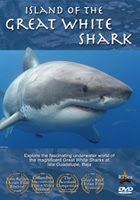 After having had the opportunity to travel through a portion of the Northwest Passage, above the Arctic Circle, documenting evidence of climate change for the marine research organization InMER,
After having had the opportunity to travel through a portion of the Northwest Passage, above the Arctic Circle, documenting evidence of climate change for the marine research organization InMER,  I became more interested in what is happening to this region and the implications. There are some serious issues beyond what is most often portrayed in the news: the threatened polar bear.
I became more interested in what is happening to this region and the implications. There are some serious issues beyond what is most often portrayed in the news: the threatened polar bear.In the recent issue of SeaWeb's Marine Science Review #290: Climate and Climate Change, several articles and abstracts outline studies made regarding the effects of rising temperatures
 on the permafrost that forms the primary ground cover in the region. Permafrost is, in essence, a frozen soil layer. The upper or active portion of the layer supports flora with shallow root structures - different types of moss and lichen abound and bushes or trees do not grow there.
on the permafrost that forms the primary ground cover in the region. Permafrost is, in essence, a frozen soil layer. The upper or active portion of the layer supports flora with shallow root structures - different types of moss and lichen abound and bushes or trees do not grow there.But also trapped in that frozen layer is a considerable amount of organic carbon and methane and as the temperature increases, those potential greenhouse gases can be released. In terms of greenhouse gas emissions, it makes the permafrost a ticking time bomb.
The SeaWeb review sited two articles: "Vulnerability of permafrost carbon to climate change: Implications for the global carbon cycle" (BioScience 58[8], 2008) and "Soil microbial respiration in arctic soil does not acclimate to temperature" (Ecology Letters 11[10], 2008). Really exciting, attention-grabbing titles, I know, and they're very heavy on the academic/scientific gobbledygook but what it boils down to is that with even a slight increase in temperature, the permafrost experiences an increase in soil decomposition that releases the trapped organic carbon and methane. And there is a considerable amount held in that frozen soil.
It's another example of the "cascade effect" where one change - an increase in temperature - causes a myriad of other changes, with some of these changes feeding back into the original issue and exacerbating the problem.
The polar bear can generate well-deserved public sympathy and hopefully provide impetus to address the problem of climate change. But it's a multi-faceted problem with potential land mines right under our feet.







No comments:
Post a Comment